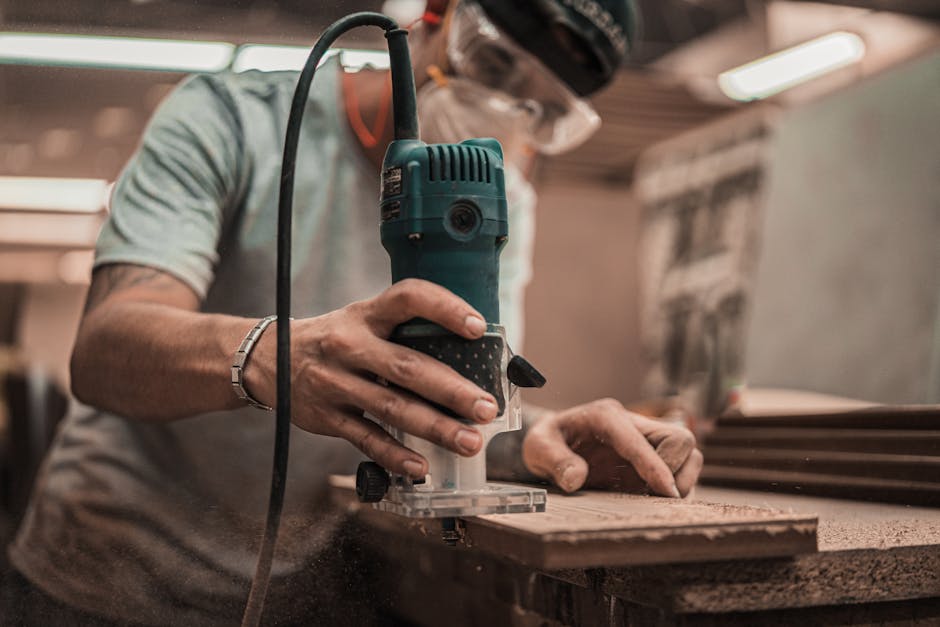this is the makita six and a half inch cordless
circular saw it comes with a 16 tooth carbide tip blade and that's going to work great on the
construction site but if you're cutting a lot of finished plywood you'll get a nicer cut from a
blade with more teeth so the first thing i like to do is replace the blade with a 40 tooth finish
plywood blade to change the blade first thing take the battery out of the saw back on the handle
here is an allen key over here we have a stop that stop will lock the blade in
place and allow you to turn the nut then take off the washer move the
guard back and take the blade out and put the new blade in making sure that the
blade is in the right direction and the teeth are spinning this way you don't want to accidentally
put the blade in backwards put the washer back and then the nut holding the
blade lock i'll tighten it up i can put the battery back in the saw to start the saw you have to push
down the safety here pushing that down and you're ready to cut but first
let's look at a few more things with the new blade on the first thing
we'll do is put the allen key back this lever here adjusts the bottom plate
that will determine how deep your cut will be so you basically want your blade to be maybe
a quarter of an inch deeper than your material so if you're cutting a two by four which is
an inch and a half maybe your blade depth would be set to an inch and three quarters and
you're just going to do that by eyeballing it now that we have the blade height set let's go
ahead and make a cut if you're going to buy a circular saw you may as well buy a speed square
it's a very handy tool and great for making straight cuts so let's say that we want this
two by four cross cut at 26 inches we'll put a mark at 26 inches take the speed square hold
the pencil on that mark move the speed square towards the pencil point and square across next
i'll use the speed square as a guide or a fence and i'm going to line the blade up so basically
i'm leaving about half of that pencil line my blade wants to be on this side of the line and
i'm just lining the teeth up with that pencil mark the saw plate will run against the
speed square and i'll make the cut let's take a look at that from another
angle and i'll stop halfway through the cut so you can see where the blade
is and the depth of the blade this is the blade guard as you push the saw
into the material the guard will come back if you are using the saw like this and drop
it down on the table the guard will prevent the blade from cutting into the table and
the saw running off sometimes you do have to manually push the guard or open the guard to
create a plunge cut and that's what we'll do next let's say you have to make a cut on the inside of
the material so the outside isn't going to open up the guard and let the blade start cutting
this might be the case if you're cutting out for a window or something so you'll have your
window drawn out or you're you're inside square you're going to have stop points because you
don't want to go beyond those stop points and you're going to cut along the line and stop
when you get to those points and you'll end up having to finish the cut with maybe a jigsaw or
something so to make this cut again you're going to adjust the height of the blade because
you don't want the blade to be that deep again maybe just a quarter inch deeper than
your material lock it in and then you're going to have to use the guard to plunge
into the material so i'm opening the guard the saw is tilted up and i'll get the
blade going and then slowly drop it down so you see i dropped it down a little forward
and then carefully back the saw up to that mark now i would have to finish the
cut with a jigsaw or a handsaw right now the saw is set at a 90 degree angle but
you can also cut as much as a 50 degree angle and to change the angle the saw will move this lever
and then adjust the base plate at the bottom we can go all the way to 50 degrees but since 45
is more common let's make a 45 degree angle cut and since this is only a six and a half inch
blade we'll need to set the blade at its deepest setting in order to cut through
an inch and a half material this is kind of an awkward cut so i suggest taking
a few practice cuts on a piece of scrap wood before you make this cut on
something that you're working on okay let's try that one again from another angle most circular saws will come with
a guide that will look like this it will slide into the base plate and
i'll have to loosen this nut over here and then i can move it into the correct position tighten the nut and lock it in place the way i
would use this guide is let's say i want to rip three inches off of this piece of plywood i'll
measure over and make a mark at three inches next i'll hold the saw with the teeth at the
mark move the guide in and lock it in place now i can make a rip down
the full length of the sheet okay well that's basically the basics of a
circular saw really just make a few cuts get used to the saw and uh the more time you spend
with the saw the more comfortable you'll become with the tool i hope that you'll click on the link
below and check out the plans bundle i've got a lot of great projects there and free youtube or
free tutorials on youtube you can check those out and next time i'm going to
show you how to make this diy track saw so i almost never use this
guide because instead of the guide i use this jig so that's next time i hope
you'll tune in for that and i'll see you then


